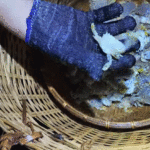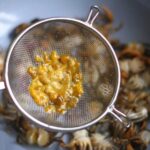1. Selecting and Cleaning Crabs Properly
How to Choose Crabs
Sea crabs are typically divided into two types: male crabs (with smaller, triangular aprons) and female crabs (with larger aprons). If you prefer more meat, go for male crabs; if you crave the rich, creamy roe, female crabs are the perfect choice.
– To get the best meat-to-shell ratio, look for firm crabs with well-defined muscles. Press on the crab’s shell, just above the third leg, and it should feel solid. The shell color should be a light shade of ivory, with a hint of green or pale cream. Avoid crabs with translucent shells, as they may be waterlogged and inferior in quality.
– In the image, the crab’s shell has a dull, stony appearance, and the crab feels firm. You can see faint white markings on the claws. The area to press is marked with a red circle. Alternatively, you can press on the carapace (the area near the claws) to check for firmness.
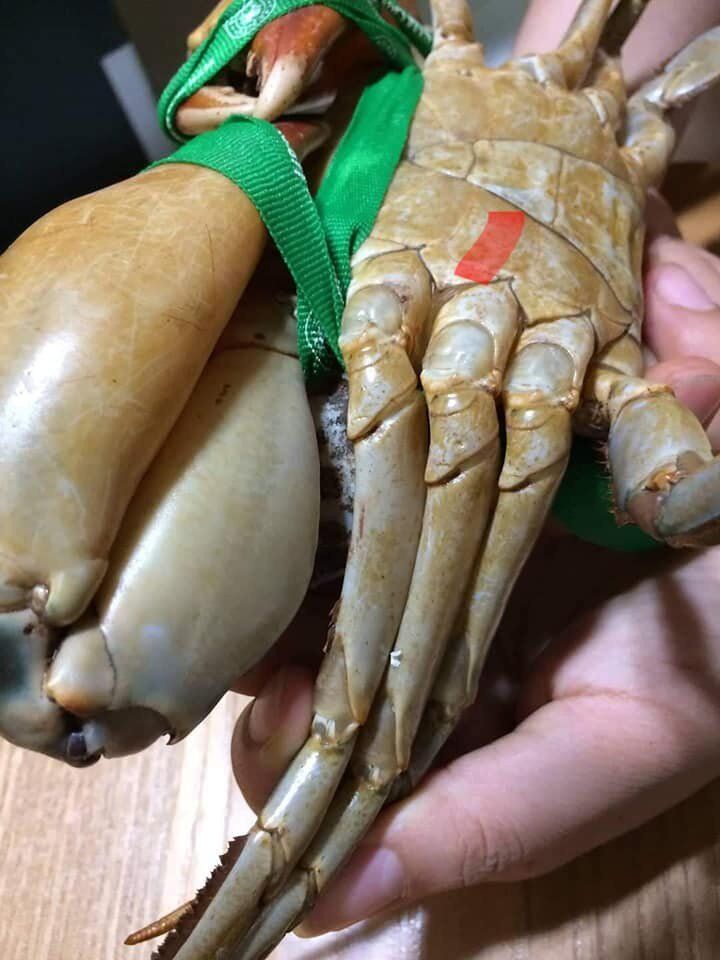
– Female crabs with roe will have a yellow tint under their aprons. For “crab molt” (two-shell crabs), squeeze both sides of the carapace and feel for a crackling sensation, indicating they are ready to molt. Their shells should feel sturdy, and when you lift the apron, you’ll see pinkish gills. Sometimes, square-aproned crabs are passed off as crab molt to fetch a higher price, so be cautious.
– Recently molted crabs are also delicious, but their shells tend to be very soft, and they have less meat. Their shells are also extremely chewy.
– These guidelines are approximate because determining the meatiness of a crab depends on various factors, such as its region of origin and whether it has mated. If a crab has mated, its meat will shrink significantly.
– If you’re less experienced, it’s wiser to buy smaller crabs, weighing around 300-500 grams (net weight, excluding the binding string). It’s easier to assess the meatiness of smaller crabs because their shells are thinner. Larger crabs are riskier, as they are more likely to have less meat and tougher shells. Crabs smaller than 300 grams may not be as tasty, except for crab molt, which is usually smaller but exceptionally flavorful.
Cleaning Crabs Before Steaming
To prevent the crabs from losing their claws during steaming, it’s advisable to pierce them before cooking. Use a sharp knife to quickly stab the triangular area on the apron, holding it for about a minute until the crab dies. Then, remove the binding string and use a brush to scrub away any mud, algae, or debris from the crab’s body and claws. Rinse thoroughly with water, and your crabs are ready for steaming.
Steaming Crabs with Beer and Lemongrass
Preparation:
– 2 kg of fresh sea crabs
– 10 stalks of fresh lemongrass
– 1 can of beer

Instructions:
After piercing and cleaning the crabs, let them air dry. When steaming, keep the crabs whole to prevent water from entering the meat, ensuring the crabs retain their flavor.
Peel away the outer layers of the lemongrass stalks until you reach the softer, fragrant core. Cut the lemongrass into 4-5 cm pieces and crush them lightly to release their aroma.
Prepare a steamer. Line the bottom of the steamer with a layer of crushed lemongrass, then arrange the crabs on top. Cover with the remaining lemongrass. Pour beer into the bottom of the pot (avoiding direct contact with the crabs), place the steamer on top, and cover tightly.
Steam the crabs for 10-15 minutes, depending on their size. When the shells turn a vibrant reddish-orange, the crabs are ready. Turn off the heat and let the crabs sit, covered, for an additional 2 minutes to absorb the flavors of the lemongrass and beer.
Tip: If you don’t have a steamer, you can boil the crabs with lemongrass and beer. Line the pot with lemongrass, add the crabs, and pour in beer to reach about one-third of the height of the crabs. Boil for 10-15 minutes.
The steamed crabs will exhibit a bright red hue, emitting a mouthwatering aroma of lemongrass infused with a subtle hint of beer. The crab meat will be firm and naturally sweet, with no hint of fishiness. This dish is best enjoyed with a dip of salt, pepper, and lime or chili lime sauce to enhance its savory character.
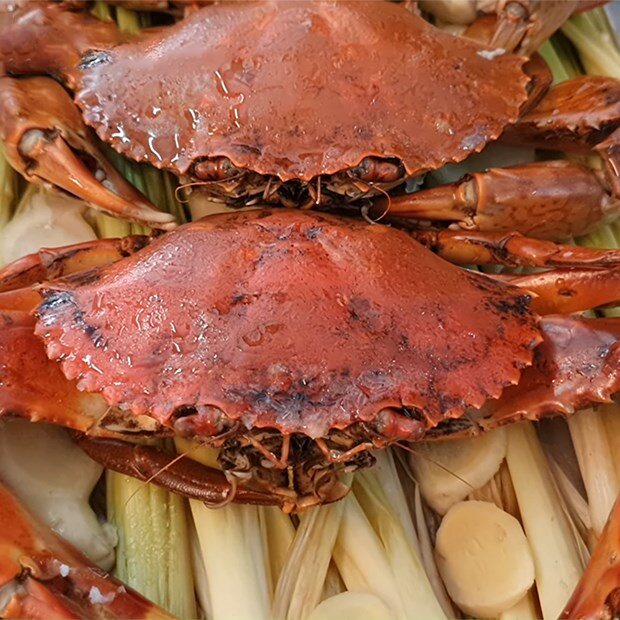
Notes for the Best Steamed Crabs:
Steam the crabs as soon as possible after purchasing to ensure freshness.
If you need to prep ahead, you can briefly soak the crabs in ice water to stun them, making it easier to pierce and clean them.
If your goal is to preserve the sweetness, aroma, and firmness of sea crabs, steaming with beer and lemongrass is a simple yet effective technique.
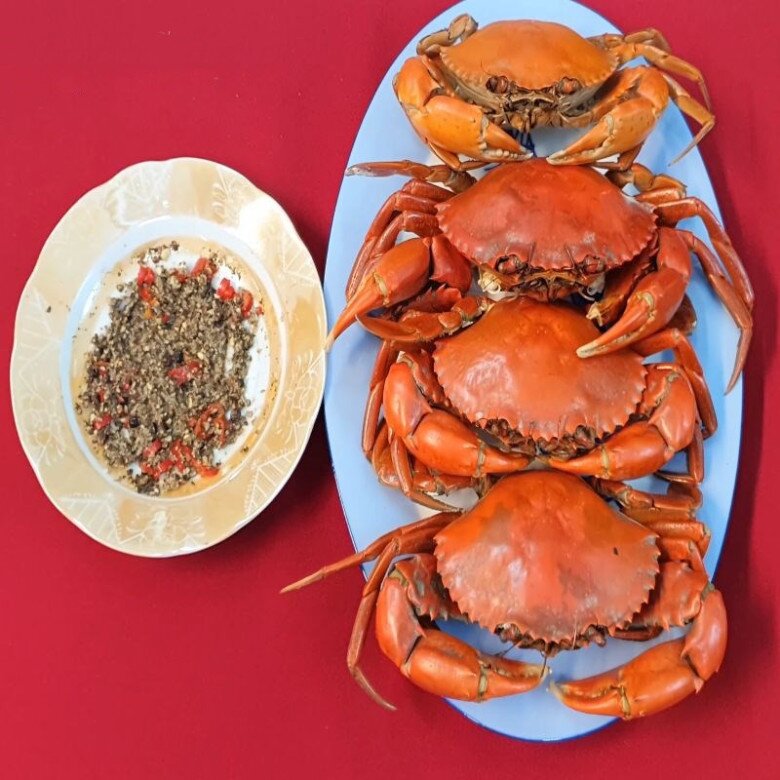
Good luck, and enjoy a delicious meal with your family!
< p>For more insights, check out these three criteria for selecting the tastiest sea crabs.
The Tasty Treasures of Quang Ngai: A Culinary Adventure by the Sea
At first glance, this delicacy resembles a crab or crayfish, but its shell is tinted with hues of green or yellow, and its legs are short and vibrant yellow. The people of Quang Ngai often catch these unique crustaceans and prepare them by stir-frying with tamarind or making a delicious bun rieu (crab noodle soup), resulting in a dish that is sweet, fragrant, and buttery in taste.
The Secret to Cooking a Delicious Crab Soup: How to Make the Meat Float in Chunks and Enhance the Sweet Aroma
Introducing the humble crab, a delicacy often enjoyed during the hot summer months. While crabs are known to dwell in rice paddies and canals, which may raise concerns about harmful bacteria, a simple solution lies in the addition of salt during the pounding process. This age-old technique not only enhances the flavor but also ensures the dish’s freshness and longevity, even during the sweltering heat.
The Ultimate Guide to Picking Meaty Crabs and Crabs: A Surefire 10 out of 10 Method
For those who relish the taste of crab meat, it’s all too easy to end up with a watery, meager offering. But fear not, as we’re serving up the ultimate guide to choosing the tastiest, meat-filled crabs and sparing your hard-earned cash. Get ready to indulge in the very best that the sea has to offer!

























